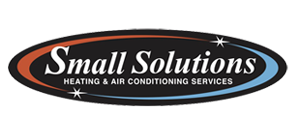The Duct Cleaning Process + Ductwork Maintenance
1. The supply and return networks are “zoned,” or separated, so they can be cleaned independently. This is typically done by removing the furnace filter, inserting it into a plastic bag and reinserting it into the furnace. “Zoned” is an important step that we need to adhere to every time we conduct duct cleaning.
2. An access hole is cut into the supply plenum and the flex duct from the HEPA-AIRE Vacuum inlet is connected to the plenum with a quick-connect attachment collar. The powerful vacuum creates high-velocity air movement within the supply ductwork to transport loosened dirt and contaminants out of the ductwork and into the vacuum’s filtration/collection system.
3. Each branch is cleaned separately starting with the branch farthest from the vacuum. The register and boot areas are blasted with compressed air from the AIRE-SWEEP Compressor using the special air booster gun to push any dirt or debris into the branch run.
4. The branches are then cleaned by feeding the Forward AIRE-SWEEP Assembly down each branch run to push dirt and debris forward into the main run. The Reverse AIRE-SWEEP Assembly can also be used to clean branch runs if access at the main supply duct is available.
5. Agitation devices such as the AIRE-SWEEP Power Brush, Duct Whip or Power Rod System are used when needed to dislodge caked-on debris from inside duct surfaces.
6. The main duct run is then cleaned. First, one-inch diameter access holes must be cut into the duct every 25 feet. Then, the Agitation Devices and an AIRE-SWEEP Assembly are used to dislodge debris accumulated on surfaces. The loosened debris is pulled or pushed toward the HEPA-AIRE Portable Power Vacuum and captured in its multi-stage filtration/collection system.
7. Once the supply side of the system has been completely cleaned, the return duct system is cleaned using the same method.
8. The coil, motor and blower and blower compartment can be cleaned.
9. Once the entire duct cleaning process is completed, all access holes are completely closed, sealed and cover plates are installed over the access holes.

